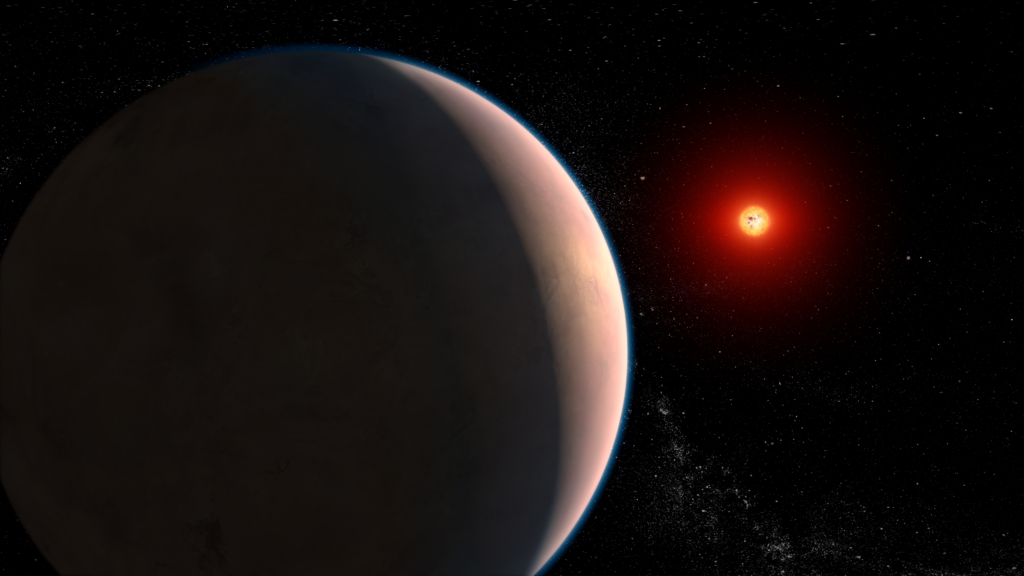We May Have Found a Super-Earth Planet With an Atmosphere
Posted on Categories Discover Magazine

Scientists using the James Webb Space Telescope (JWST) may have uncovered one of the Holy Grails of astronomy and astrophysics: the discovery of a rocky exoplanet with an exotic, water-rich atmosphere.
Then again, it might all be an illusion.
JWST was designed, in part, to hunt for such planets, and GJ 486 b would be the first identified. The problem is, the planet closely hugs its parent star, a red dwarf, and lies well outside the habitable zone. Temperatures on the planet, which is larger than Earth, reach a scorching 800 degrees Fahrenheit – too hot to support life as we know it.
“It’s in no way habitable,” said Sarah Moran, a planetary scientist at the University of Arizona in Tucson, in a press release.
Read More: How the James Webb Space Telescope Takes Such Stunning Pictures
How JWST Uncovered a Possible Atmosphere
JWST detected the planet’s atmosphere, or at least evidence of one, by zeroing in on the planet as it passed in front of the star. As starlight filtered through the shroud, the telescope recorded the changes to the near infrared part of the spectrum. After crunching the data, the scientists concluded that the planet lacked the most common planetary gases: carbon dioxide, methane and hydrogen.
What it did have, perplexingly, was plenty of water vapor.
This was strange because a super-Earth planet in tight orbit around a star, a major source of vapor-destroying radiation, was no place for the stuff. The team concluded that if the planet did have a watery atmosphere, it would have to be continuously replenished, perhaps by steam-belching volcanoes. Those could release water from inside the planet.
“There is no comparable atmosphere in our own solar system,” said Kevin Stevenson of the Johns Hopkins University Applied Physics Laboratory, in a press release. “We could be exploring a brave new world that would speak to the diversity of exoplanet atmospheres out there.”
A Potential Exo-Disappointment
The strange new atmosphere could also be something much less exciting. Despite their great temperatures, dwarf stars can and do harbor water molecules in their own atmospheres – their photospheres. The researchers had to wonder if that’s what JWST had detected, rather than some exotic atmosphere around an exoplanet.
Such water is most likely found around starspots – cooler, darker areas on the surface of a star – though the telescope’s data showed no evidence that the planet had crossed near one of those.
“But that doesn’t mean that there aren’t spots elsewhere on the star,” said Ryan MacDonald, an astrophysicist at the University of Michigan, in a press release. “And that’s exactly the physical scenario that would impart these signals into the data and could wind up looking like a planetary atmosphere.”
The Next Step
Researchers plan to point the JWST’s Mid-Infrared Instrument at the planet’s scorching day side to probe the possible atmosphere from a different angle. They’re looking for how the heat spreads across the planet’s surface and whether it sits directly under the star. Or they may find that the warmth shifts as it circulates in the atmosphere.
That would be the evidence they’re looking for, according to the project’s proposal.
Read More: The James Webb Space Telescope Gets Ready to Gaze Deep into the Universe